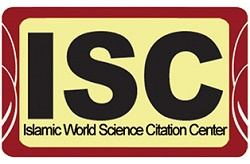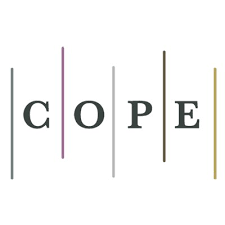Optimization of manpower allocation by considering customer relationship management criteria and uncertainty conditions in car dealerships
DOI:
https://doi.org/10.52547/ijimes.1.2.12DOR:
https://dorl.net/dor/20.1001.1.27832678.2021.1.2.2.4Keywords:
Customer Relationship Management, Mathematical Optimization, Metaheuristic Algorithms, Car IndustryAbstract
Purpose A mathematical mixed integer model was used in this research in order to optimize manpower allocation in car industry. The objective function of proposed model subjected to minimization of the maximum waiting time for customers in service queue and limitations included manpower allocation and time calculation for each service in each center.
Methodology: Therefore, mathematical optimization methods were employed in this research. To solve the problem at small dimensions, BARON solver was used through GAMS software. Metaheuristic algorithms were used to solve the large dimensions of problem due to NP-hard nature of allocation problem. However, these algorithms have been designed based on the natural elements; hence, a stochastic procedure is applied to generate initial responses and to improve the process to obtained the final response. Therefore, proper comparisons should be done to make sure of accurate performance of such procedure. To this end, three metaheuristic algorithms of Genetic, Harmony Search and Gray Wolf were used to solve the final problem.
Findings: According to the obtained computational results, gray wolf algorithm had the highest performance efficiency compared to other algorithms so it is more practical in solving the real numerical samples.
Originality/Value: The objective function of proposed model subjected to minimization of the maximum waiting time for customers in service queue and limitations included manpower allocation and time calculation for each service in each center. We used three metaheuristic algorithms, Genetic, Harmony Search and Gray Wolf, to solve the final problem.
Downloads
References
García Echevarría, S. (2020). Introducción a la economía de la empresa. Ediciones Díaz de Santos.
Guerola-Navarro, V., Oltra-Badenes, R., Gil-Gomez, H., & Gil-Gomez, J. A. (2020b). Customer relationship management (CRM): A bibliometric analysis. International Journal of Services Operations and Informatics, 10(3), 242–268. https://doi.org/10.1504/IJSOI.2020.108988
Oltra-Badenes, R., Gil-Gomez, H., Guerola-Navarro, V., & Vicedo, P. (2019). Is it possible to manage the product recovery processes in an ERP? Analysis of functional needs. Sustainability, 11(16), 4380. https://doi.org/10.3390/su11164380.
Guerola-Navarro, V., Oltra-Badenes, R., & Gil-Gomez, H. (2020a). An´alisis de la relaci´on entre el grado de introducci´on de CRM y los beneficios de la empresa a trav´es del Desempe˜no Organizacional y la Innovaci´on Empresarial. 3C Investigaci´on y pensamiento crítico, 9(1), 65–163. https://doi.org/10.17993/3cemp.2020.090141.67-87
Payne, A., & Frow, P. (2005). A strategic framework for customer relationship management. Journal of Marketing, 69(4), 167–176. https://doi.org/10.1509/jmkg.2005.69.4.167
Acuna, S. T., Juristo, N., & Moreno, A. M. (2006). Emphasizing human capabilities in software development. IEEE software, 23(2), 94-101. DOI: 10.1109/MS.2006.47.
Aljuneidi, T., & Bulgak, A. A. (2016). Design of Cellular Manufacturing Systems Considering Dynamic Production Planning and Worker Assignments. Journal of Mathematics and System Sciences, 6, 1-15. DOI: 10.17265/2159-5291/2016.01.001.
Baykasoğlu, A., Topaloğlu, Ş., & Şenyüzlüler, F. (2018). Manufacturing cell formation with flexible processing capabilities and worker assignment: Comparison of constraint programming and integer programming approaches. Proceedings of the Institution of Mechanical Engineers, Part B: Journal of Engineering Manufacture, 232(11), 2054-2068. https://doi.org/10.1177/0954405416682281
Bhat, S. A. & Darzi, M. A. (2016). Customer relationship management: An approach to competitive advantage in the banking sector by exploring the mediational role of loyalty. International Journal Of Bank Marketing, 34(3), 388–410. DOI: 10.1108/IJBM-11-2014-0160.
Chen, I. J. & Popovich, K. (2013). Understanding customer relationship management (CRM): People, process and technology. Business Process Management Journal, 9(5), 672–688. DOI: 10.1108/14637150310496758.
Ernst, H., Hoyer, W. D., Krafft, M. & Krieger, K. (2011). Customer relationship management and company performance—the mediating role of new product performance. Journal Of The Academy Of Marketing Science, 39(2), 290–306. DOI: 10.1007/s11747-010-0194-5.
E-Silva, L. C., & Costa, A. P. C. S. (2013). Decision model for allocating human resources in information system projects. International Journal of Project Management, 31(1), 100-108. https://doi.org/10.1016/j.ijproman.2012.06.008.
Even, A., Shankaranarayanan, G., & Berger, P. D. (2010). Evaluating a model for cost-effective data quality management in a real-world CRM setting. Decision Support Systems, 50(1), 152-163. https://doi.org/10.1016/j.dss.2010.07.011
Fan, Y.-W. & Ku, E. (2010). Customer focus, service process fit and customer relationship management profitability: the effect of knowledge sharing. The Service Industries Journal, 30(2), 203–223. DOI: 10.1080/02642060802120141.
Garrido-Moreno, A., & Padilla-Melendez, A. (2011). Analyzing the impact of knowledge management on CRM success: The mediating effects of organizational factors. International Journal of Information Management, 31(5), 437-444. https://doi.org/10.1016/j.ijinfomgt.2011.01.002.
Hart, S., Hogg, G., & Banerjee, M. (2004). Does the level of experience have an effect on CRM programs? Exploratory research findings. Industrial Marketing Management, 33(6), 549-560. https://doi.org/10.1016/j.indmarman.2004.01.007.
Hoffmann, A. O., & Birnbrich, C. (2012). The impact of fraud prevention on bank-customer relationships: An empirical investigation in retail banking. International journal of bank marketing, 30(5), 390-407. https://doi.org/10.1108/02652321211247435.
Lai, C. S., Lu, J., & Qiao, Y. (2018, July). Multi-objective Assignment Optimization of Port Supply Chain Based on Interval Analysis. In 2018 37th Chinese Control Conference (CCC) (pp. 3274-3278). IEEE. DOI: 10.23919/ChiCC.2018.8482791.
Lian, J., Liu, C., Li, W., & Yin, Y. (2018). A multi-skilled worker assignment problem in seru production systems considering the worker heterogeneity. Computers & Industrial Engineering, 118, 366-382. https://doi.org/10.1016/j.cie.2018.02.035.
Méndez-Vázquez, Y. M., & Nembhard, D. A. (2018). Worker-cell assignment: The impact of organizational factors on performance in cellular manufacturing systems. Computers & Industrial Engineering. https://doi.org/10.1016/j.cie.2018.11.050.
Moreira, M. C. O., Miralles, C., & Costa, A. M. (2015). Model and heuristics for the assembly line worker integration and balancing problem. Computers & Operations Research, 54, 64-73. https://doi.org/10.1016/j.cor.2014.08.021.
Moreira, M. C. O., Pastor, R., Costa, A. M., & Miralles, C. (2017). The multi-objective assembly line worker integration and balancing problem of type-2. Computers & Operations Research, 82, 114-125. https://doi.org/10.1016/j.cor.2017.01.003.
Osarenkhoe, A., & Bennani, A. E. (2007). An exploratory study of implementation of customer relationship management strategy. Business Process Management Journal, 13(1), 139-164. https://doi.org/10.1108/14637150710721177.
Polat, O., Kalayci, C. B., Mutlu, Ö., & Gupta, S. M. (2016). A two-phase variable neighbourhood search algorithm for assembly line worker assignment and balancing problem type-II: an industrial case study. International Journal of Production Research, 54(3), 722-741. https://doi.org/10.1080/00207543.2015.1055344.
Quader, S., & Castillo-Villar, K. K. (2018). Design of an enhanced multi-aisle order-picking system considering storage assignments and routing heuristics. Robotics and Computer-Integrated Manufacturing, 50, 13-29. https://doi.org/10.1016/j.rcim.2015.12.009.
Ritt, M., Costa, A. M., & Miralles, C. (2016). The assembly line worker assignment and balancing problem with stochastic worker availability. International Journal of Production Research, 54(3), 907-922. https://doi.org/10.1080/00207543.2015.1108534.
Sanayei, A., & Sadidi, M. (2011). Investigation of customer knowledge management (CKM) dimensions: A survey research. International Journal of Business and Management, 6(11), 234. DOI:10.5539/ijbm.v6n11p234.
Sikora, C. G. S., Lopes, T. C., & Magatão, L. (2017). Traveling worker assembly line (re) balancing problem: Model, reduction techniques, and real case studies. European Journal of Operational Research, 259(3), 949-971. https://doi.org/10.1016/j.ejor.2016.11.027.
Sohrabi, B., Haghighi, M., & Khanlari, A. (2010). Customer relationship management maturity model (CRM3): A model for stepwise implementation. Journal of Human Sciences, 7(1), 1-20.
Sun, Y., Wang, J., & Tan, W. (2018, May). Dynamic Worker-and-Task Assignment on Uncertain Spatial Crowdsourcing. In 2018 IEEE 22nd International Conference on Computer Supported Cooperative Work in Design ((CSCWD)) (pp. 755-760). IEEE. DOI: 10.1109/CSCWD.2018.8465361.
Wang, Y., & Feng, H. (2012). Customer relationship management capabilities: Measurement, antecedents and consequences. Management Decision, 50(1), 115-129. https://doi.org/10.1108/00251741211194903.
Wang, Y., Zhang, X., & Liu, S. (2018, May). Multi-objective Worker Assignment Planning Model and Algorithm Considering Worker Flexibility and Cooperation. In 2018 IEEE 22nd International Conference on Computer Supported Cooperative Work in Design ((CSCWD)) (pp. 196-201). IEEE. DOI: 10.1109/CSCWD.2018.8465143.
Wu, L., Chan, F. T., Niu, B., & Li, L. (2018). Cross-trained worker assignment and comparative analysis on throughput of divisional and rotating seru. Industrial Management & Data Systems, 118(5), 1114-1136. https://doi.org/10.1108/IMDS-07-2017-0303.
Yilmaz, O. F., & Durmusoglu, M. B. (2018). A performance comparison and evaluation of metaheuristics for a batch scheduling problem in a multi-hybrid cell manufacturing system with skilled workforce assignment. Journal of Industrial & Management Optimization, 14(3), 1219-1249. DOI: 10.3934/jimo.2018007.
Zeynep Ata, U., & Toker, A. (2012). The effect of customer relationship management adoption in business-to-busines. https://doi.org/10.1108/08858621211251497.
Samadzad, S., & Hashemi, M. (2021). Concentration and its Effect on Advertising: Case Study: Iranian Food and Beverage Industries. International Journal of Innovation in Management, Economics and Social Sciences, 1(1), 55–64. https://doi.org/10.52547/ijimes.1.1.55 .
Ghahremani Nahr, J., Pasandideh, S. H. R., & Niaki, S. T. A. (2020). A robust optimization approach for multi-objective, multi-product, multi-period, closed-loop green supply chain network designs under uncertainty and discount. Journal of industrial and production engineering, 37(1), 1-22. https://doi.org/10.1080/21681015.2017.1421591
Ghahremani-Nahr, J., Nozari, H., & Bathaee, M. (2021). Robust Box Approach for Blood Supply Chain Network Design under Uncertainty: Hybrid Moth-Flame Optimization and Genetic Algorithm. International Journal of Innovation in Engineering, 1(2), 40-62. https://doi.org/10.52547/ijie.1.2.40
Ghahremani Nahr, J., & Bathaee, M. (2021). Design of a Humanitarian Logistics Network Considering the Purchase Contract. Journal of Decisions and Operations Research. DOI: 10.22105/DMOR.2021.270988.1311.
Published
How to Cite
Issue
Section
License
Copyright (c) 2021 Mehrnaz Bathaee

This work is licensed under a Creative Commons Attribution 4.0 International License.












